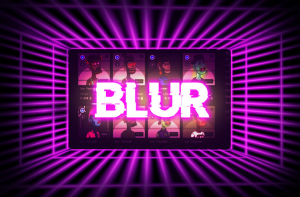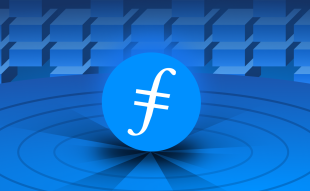Join Our Telegram channel to stay up to date on breaking news coverage
NFT trading has intensified recently as Ethereum NFT volume more than doubled in the past week, following two consecutive months of sales growth. Due to an evolving market, where leader OpenSea has been surpassed by upstart marketplace Blur, traders have been quickly exchanging valuable NFTs for DeFi tokens.
DappRadar data shows that Blur generated $460 million in Ethereum NFT trades in the last seven days, a 361% increase from the prior week. While this was happening, OpenSea’s trading volume increased by 12% to $107 million. The total number of trades on the third-place platform, X2Y2, was just $11 million during that time.
Overall, CryptoSlam reports that the volume of trading in Ethereum NFT has increased by 155% week over week. The increase in volume occurs after Blur airdropped its BLUR governance token to NFT traders who earned awards through the exchange and by trading elsewhere before Blur’s own launch last fall.
At its current price of $1.20 per token, the BLUR token has a market valuation of $466 million, and it seems that at least some NFT collectors invested their airdropped earnings back into purchasing NFTs. The market data reveals that they predominantly use Blur to purchase and sell NFTs.
But, it doesn’t seem like traders just selling off their BLUR tokens and buying and holding high-value NFTs is what’s causing the spike in trading volume at Blur. Conversely, whale traders with substantial NFT holdings appear to be flipping NFTs more frequently than before in an effort to increase the likelihood that token reward allocations in the future will increase.
For instance, Otherside, the upcoming metaverse game from Yuga Labs, has been the top NFT project (market-wide) in terms of trading volume during the previous week. According to CryptoSlam, the NFT land plots generated almost $63 million in trades over the last week, an increase of 318% week over week.
The biggest seller over that time period was MachiBigBrother, a well-known pseudonymous NFT trader who participated in approximately 1,300 Otherside NFT trades, generating sales worth $4.3 million. His trading activity is filled with an endless stream of inbound and outbound trades, and this is only one of many.
It is made possible by Blur’s distinctive marketplace mechanism, which not only offers token payouts to encourage heavy activity generally but also compensates traders for employing bidding pools to promote bulk trading for NFTs.
Blur Bidding Pools have reached a new ATH of $132.65M TVL, or, around 2.4x Aptos TVL and 0.5x Solana TVL.
Blur also became the #1 protocol on Ethereum by gas usage as well, surpassing both Uniswap and Seaport.
🚨TURN NOTIFICATIONS ON🚨 for details about Season 2, coming soon! https://t.co/89DONJ6K8z pic.twitter.com/GCqGHDQBcq
— Blur (@blur_io) February 20, 2023
Blur notably mentions that traders who “bid on top collections closer to the floor gain higher rewards” when announcing its next “Season 2” token airdrop. To put it another way, traders who place a bid for a well-liked project close to the floor price—that is, the least expensive NFT for that project—will maximize their potential rewards. As a result, they are both doing bulk purchases and sales.
Because of this, many of the NFTs in projects like Otherside, the Mutant Ape Yacht Club, and Moonbirds are flying this week and frequently changing hands. And the aforementioned whale trader MachiBigBrother is currently in first place on Blur’s Season 2 leaderboard for trading rewards.
DeFi, a collective term for non-custodial trading and lending services, completely overtook the Ethereum ecosystem in 2020 and has since significantly contributed to its expansion. Currently, Blur has motivated traders to use NFTs more like DeFi tokens, flipping frequently and striving to reap every possible profit through liquidity mining. This has been accomplished through token payouts and gamification approaches. Some traders have even published instructions on how to mine Blur’s token rewards efficiently and without making costly mistakes.
DeFi and NFTs are merging. Ape and ape hard.
— Machi Big Brother (@machibigbrother) February 18, 2023
The NFT-meets-DeFi strategy isn’t really original. In recent months, we’ve seen DeFi-like implementations for NFTs, like BendDAO’s use of that kind of format for NFT-based loans and Sudoswap and Hadeswap’s adoption of liquidity pools rather than conventional marketplace listings. In recent months, other NFT-based loan processes have emerged and thrived.
NFTs are “altcoins with pictures,” as Crypto Twitter celebrity Cobie stated in August amid earlier discussions about NFT flipping and creator rights.
Blur’s DeFi-like approach to NFT trading has accomplished that idea at a scale never before seen, and the impact has been significant. It was a contentious stance back then.
Due to Blur’s trading frenzy, OpenSea, which had previously dominated the market in terms of trading volume, has lost ground. As a result, OpenSea stated Friday that it will temporarily reduce its own 2.5% marketplace fee and scale back on several creative royalty enforcement provisions. In order to compete with Blur, OpenSea must basically go “zero fee,” forgoing both the fees that are its main source of income and the fees that support the majority of NFT projects.
Similar to how many NFT artists and creators publicly objected to OpenSea‘s proposal to alter its creator royalties arrangement in the fall, this time around. Yet as the longtime market leader tries to acclimate to a new normal, Blur, which does not completely recognize creator payments across projects, reportedly forced OpenSea’s hand last week.
Over 106,000 distinct wallets were served by OpenSea over the course of the past week compared to 66,000 by Blur. Nonetheless, Blur has jumped ahead in terms of transactions, and the gap in trade volume is growing.
The deluge of NFT flipping and rewards “farming” on Blur muddles the market data, much like more extreme cases of wash trading, and the sharp increase in trading volume over the previous week doesn’t indicate that the NFT market is expanding and onboarding a large number of new collectors. The majority of the trading is between whales.
Naveen Jain, the founder of the Web3 project, tweeted,
We aren’t enlarging the pie. The same people are always moving ETH and assets around.
That seems to be the case, but the market as a whole is still having to deal with the changing tides, from Blur and OpenSea competing for market share to project creators seeing their income streams dry up as platforms cater more to NFT flippers and professional traders.
Related
- Blur NFT Airdrop & $BLUR Price Prediction – Best Crypto to Buy Now?
- Blur Launches Airdrop Token for Ethereum NFT Traders
- DeFi and NFTs
Join Our Telegram channel to stay up to date on breaking news coverage


